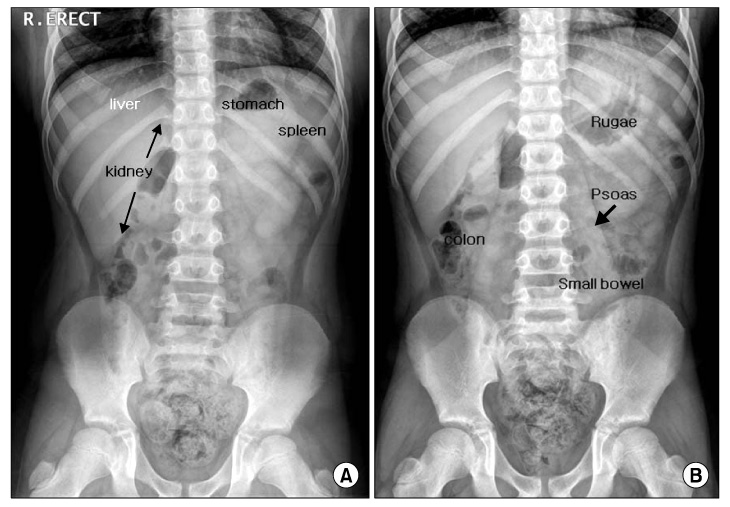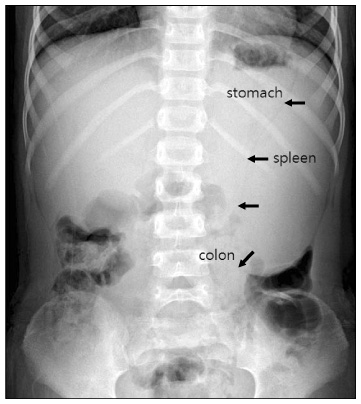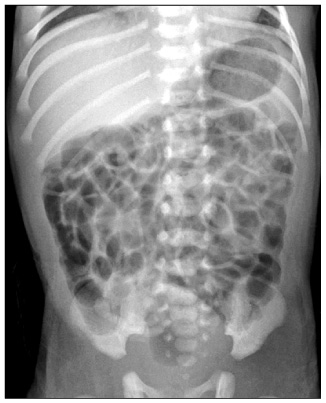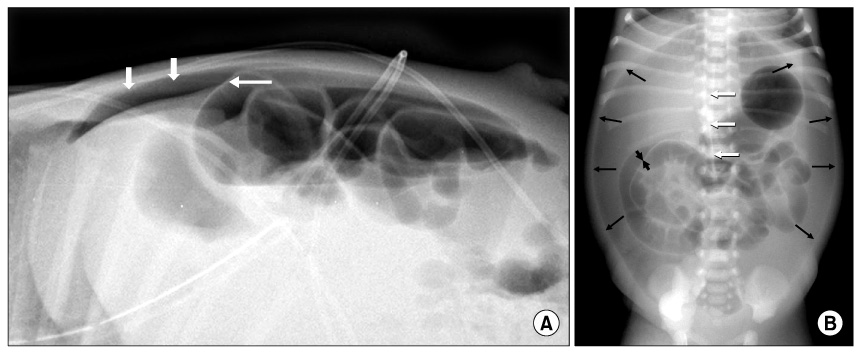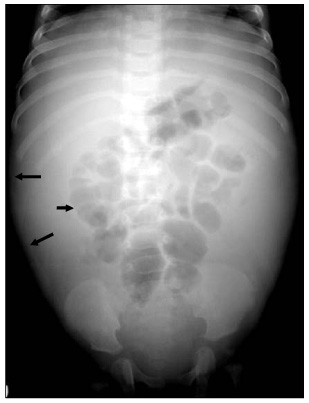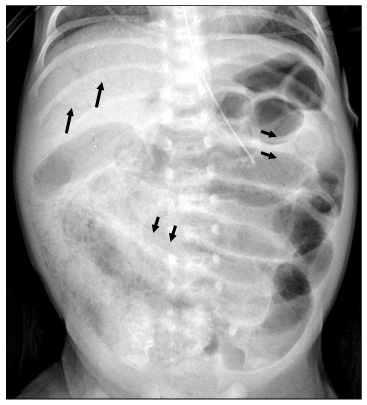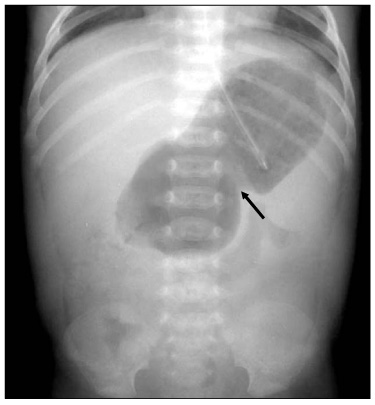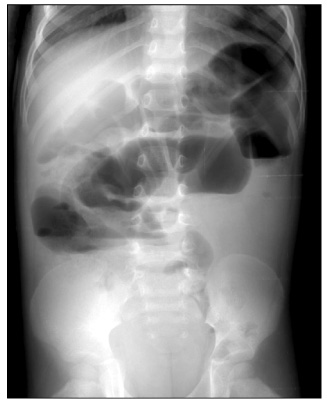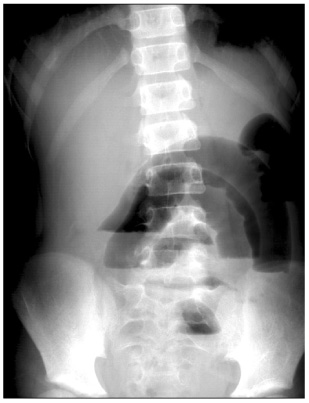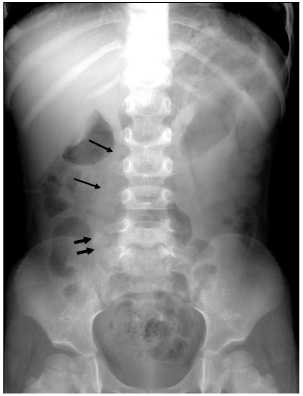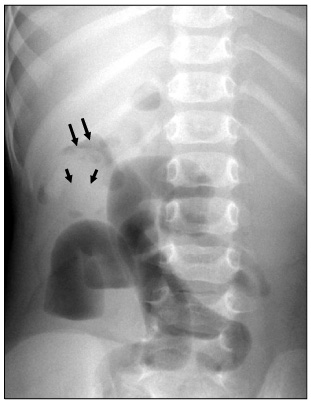Korean J Pediatr Gastroenterol Nutr.
2011 Jun;14(2):130-136. 10.5223/kjpgn.2011.14.2.130.
Plain Abdominal Radiography in Infants and Children
- Affiliations
-
- 1Department of Radiology, Keimyung University School of Medicine, Daegu, Korea. hjlee@dsmc.or.kr
- KMID: 2276532
- DOI: http://doi.org/10.5223/kjpgn.2011.14.2.130
Abstract
- Plain X-ray radiographs are the first line of investigation taken in the diagnosis of abdominal pathology and are considered an important diagnostic tool to provide guidelines for further imaging studies and comprehensive therapeutic management. Although most abdominal pathology demonstrates non-specific radiologic findings, the plain abdominal radiography is very useful in specific diseases, including certain gastrointestinal anomalies. This review provides image findings of normal plain abdominal radiography and some common abdominal pathology in infants and children.
Figure
Reference
-
1. Coley BD, Hernans-Schulman M. Slovis TL, editor. The abdomen, pelvis, retroperitoneum. Caffey's pediatric diagnostic imaging. 2008. 11th ed. Philladelphia: Mosby;1759–2464.2. String DA. Carty H, Brunelle F, Stringer DA, Kao SCS, editors. The gastrointestinal tract. Imaging children. 2005. 2nd ed. Philadelphia: Elsevier Ltd;1289–1529.3. Swichuk LE. Imaging of the newborn, infant, and young child. 2004. 5th ed. Philadelphia: Lippncott Williams and Wilkins;539–589.4. McAlister WH, Kronemer KA. Emergency gastrointestinal radiology of the newborn. Radiol Clin North Am. 1996. 34:819–844.5. Silva AC, Pimenta M, Guimaraes LS. Small bowel obstruction: what to look for. Radiographics. 2009. 29:423–439.
Article6. Del-Pozo G, Albillos JC, Tejedor D, Calero R, Miguel Rasero M, de-la-Calle U, et al. Intussusception in children: current concepts in diagnosis and enema reduction. Radiographics. 1999. 19:299–319.
Article
- Full Text Links
- Actions
-
Cited
- CITED
-
- Close
- Share
- Similar articles
-
- Barium Enema Findings of Milk Allergy in Infants
- The Accuracy of Barr, Blethyn and Leech Scoring Systems onPlain Abdominal Radiographs in Childhood Constipation
- Diagnostic Value of Plain Abdominal Radiography in Stroke Patients With Bowel Dysfunction
- The Changing pattern of the Plain Abdominal Radiogram by Progression of the Intussusception in Children
- Urological Observation on Abdominal Masses in Infants and Children

